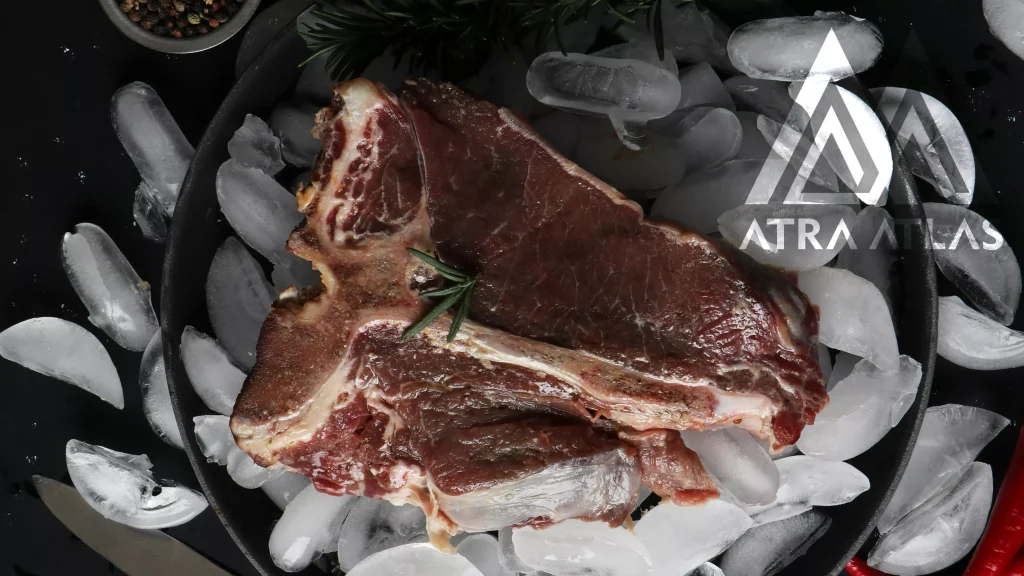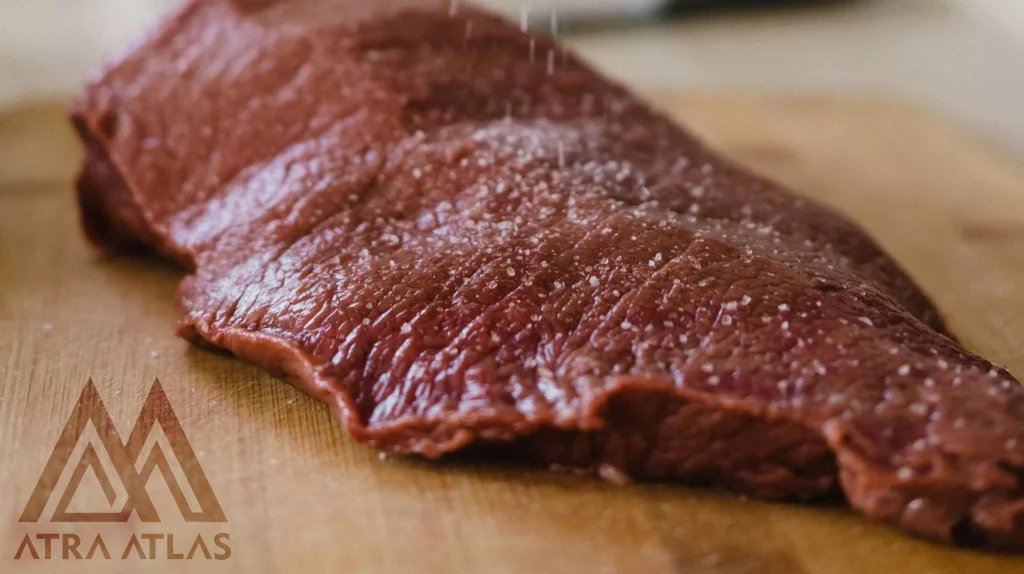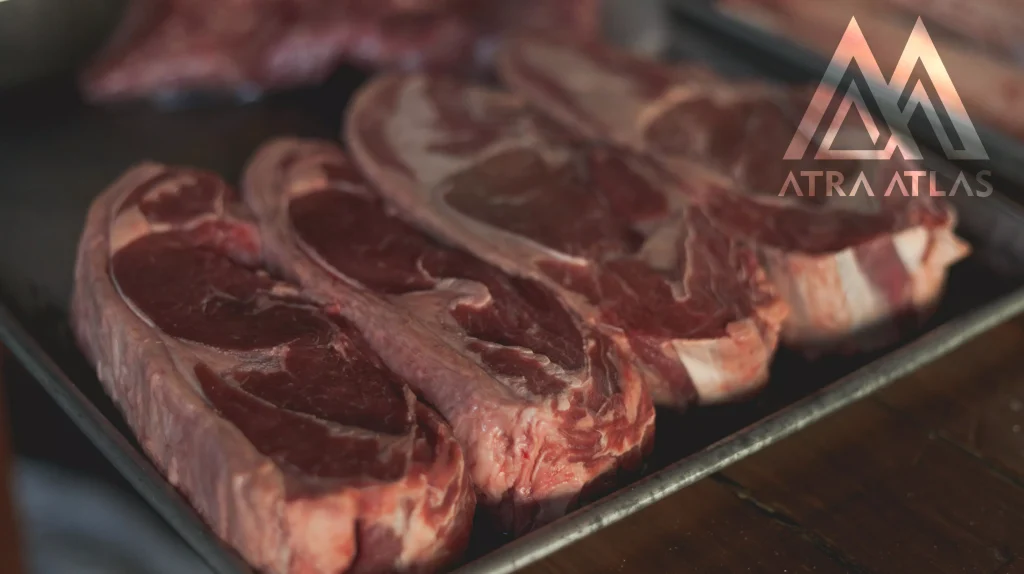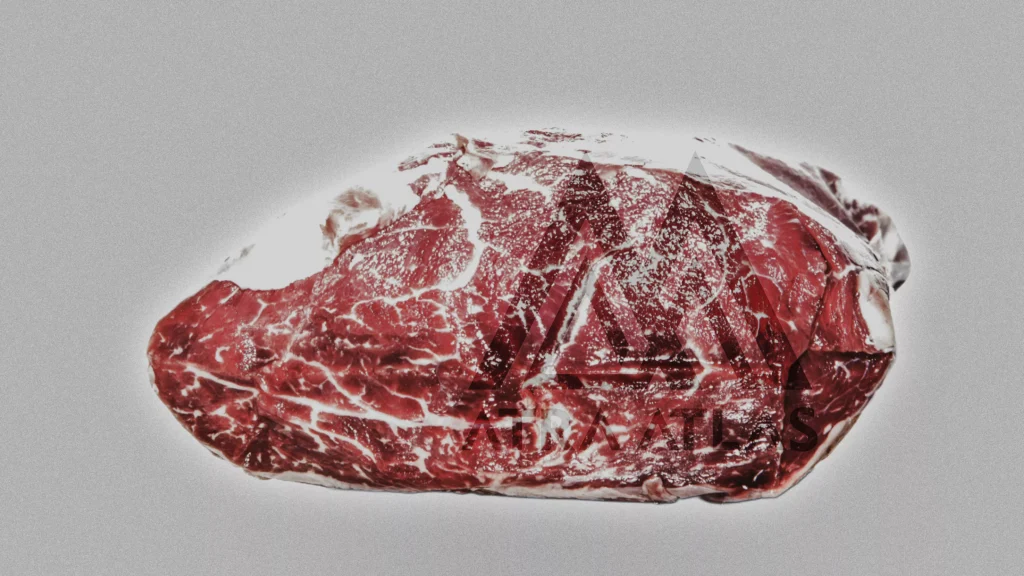
Brazilian Meat
Brazilian meat is renowned not only for its high quality and unique flavor but also as a rich source of protein and nutrients. This meat is produced in accordance with international standards and sustainable methods, ensuring its quality and health benefits. Brazilian meat is an excellent choice for healthy and diverse meals that can contribute to better nutrition.
Why Eat Meat at All?
Meat is rich in protein, and protein is one of the main structures of the human body, consisting of amino acids. The human body needs 20 different types of amino acids, some of which can only be obtained through food. Protein is very necessary to promote growth, repair tissues, and help the proper functioning of hormones and the immune system.
Meat is one of the best and most important sources of protein and comes in various types, including:
Red Meat: Such as beef and lamb, which are rich in iron and zinc.
White Meat: Such as chicken and fish, which are leaner and more suitable for light diets.
Fresh Meat: Which has a higher flavor and nutritional value.
Frozen Meat: Which is more convenient and has a longer shelf life.
Given the high per capita consumption of red meat in Iran, it is essential to know the different types of red meat and benefit from their advantages for a balanced diet. Meat is important not only as a source of protein but also because it contains vitamins and minerals such as iron, zinc, vitamin B12, and phosphorus that contribute to overall health.
With all these benefits, including meat in your diet can help you have a stronger and healthier body.
What is the Nutritional Value of Brazilian Meat?
Brazilian meat is renowned worldwide for its high quality and nutritional value. Here is the nutritional content of Brazilian beef per 100 grams:
Energy: 254 calories
Protein: 16.8 grams
Fat: 23 grams
Carbohydrates: 0 grams
This meat is also rich in essential vitamins and minerals:
Vitamin B12: 100% of the daily requirement
Zinc: 38% of the daily requirement
Selenium: 27.4% of the daily requirement
Niacin: 26.5% of the daily requirement
Iron: 10.6% of the daily requirement
This nutritional profile makes Brazilian meat a rich source of protein and essential nutrients that contribute to overall health.
Brazilian meat and its export to Iran
Brazilian meat, as its name suggests, is exported from Brazil to many countries around the world. One of the important destinations for Brazilian meat exports is Iran. Due to the long distance from Brazil to Iran, the import of Brazilian meat can only be carried out in frozen form to prevent spoilage during the long transportation period.
Brazilian meat is produced in compliance with international standards and sustainable methods, which ensures it maintains its high quality even when frozen. This meat, rich in protein and essential nutrients, is an excellent choice for preparing healthy and diverse meals.

Benefits of Brazilian Beef
Brazilian meat is one of the most popular types of meat worldwide. This meat comes from young calves, approximately 18 months old, and has a moderate and balanced temperament. Compared to other red meats, veal has a cooler temperament but is still considered warm.
Why eat Brazilian meat?
High Nutritional Value: Every 100 grams of Brazilian veal contains 200 calories of energy and a significant amount of protein. This meat is rich in essential vitamins and minerals, which help in muscle health, strengthening the immune system, and boosting energy levels.
Protein and Amino Acids: Brazilian meat contains proteins and amino acids essential for growth, tissue repair, and proper hormone function. The Brazilian veal fillet, due to its high protein content, provides a longer-lasting feeling of fullness and aids in weight control.
Muscle Strengthening: Consuming Brazilian meat is especially beneficial for athletes and individuals aiming for muscle building. This meat helps in muscle development and prevents muscle deterioration.
Therapeutic Properties: Due to its vitamins and minerals, Brazilian meat can contribute to overall body health. This meat contains vitamin B12, zinc, selenium, niacin, and iron, all of which are essential for health.
Aids in Better Digestion: Using spices like pepper, cinnamon, ginger, turmeric, and garlic can help improve the digestion of veal and enhance its temperament.
Brazilian meat is an excellent choice for preparing healthy and diverse meals due to its high quality and unique flavor.
Food experts say that if you include veal fillet in your diet, you will lose weight over time. The truth is that the upper parts of the calf’s body, such as the loin and fillet, are more beneficial than other parts. These parts absorb less fat and are richer in protein. The use of these parts of veal has these properties.
What is the nutritional value of Brazilian meat?
Brazilian meat, whether frozen or fresh, is a high nutritional source for protein and vitamins. However, it is important to note the nutritional differences between these two types of meat.
Fresh Meat
Fresh meat usually has the highest level of nutrients. Because it hasn’t undergone freezing processes, it contains:
More protein, which is essential for growth and tissue repair.
Higher levels of B vitamins, which are vital for the proper function of the nervous system and metabolism.
More iron, which helps with blood health and prevents anemia.
Frozen Meat
While frozen Brazilian meat has many benefits, the freezing process may cause some loss of nutritional value. However, this does not mean the complete loss of nutrients. In fact:
Proteins and main minerals like iron, zinc, and selenium are still preserved.
Some vitamins, like vitamin B and vitamin C, may slightly decrease during freezing.
Freezing helps maintain the flavor and quality of the meat over a longer period.
Benefits of Frozen Meat
Longer shelf life: Freezing helps preserve the meat for a long time without major nutrient loss.
Easier accessibility: Frozen meat is always available and can be used at any time.
Nutritional Recommendations
To get the maximum nutritional value from meat, it’s better to:
Consider fresh meat as your primary protein source.
Use proper cooking methods to preserve nutrients when using frozen meat.
Both types of Brazilian meat can contribute to a balanced and healthy diet. The choice between fresh and frozen meat depends on your individual needs and circumstances. By following nutritional guidelines, you can benefit from all the advantages of this valuable nutritional source.
Considering the nutritional value of meat, why is the demand for Brazilian meat high?
If we were to answer this question in one word, it would be price! Brazilian meat is popular among people due to its affordable price compared to other types of meat.
Of course, as mentioned earlier, the nutritional value of Brazilian meat does not differ from other meats. It still contains the necessary proteins, vitamins, and minerals needed by the body, making it an excellent option to meet your nutritional needs.
If you need any further assistance, feel free to let me know.

Fresh meat and its nutritional value compared to the nutritional value of Brazilian meat from the perspective of nutritionists
Fresh red meat includes cuts from the carcasses of cattle, buffalo, sheep, or goats, typically frozen at temperatures between 0 to 4 degrees Celsius, provided it has not been more than 72 hours since it was cut. We all care about the healthiness of the meat we consume.
Therefore, when purchasing fresh meat, it’s important to ensure it looks clean, has no signs of contamination, bruises, hematomas, or lymph node enlargements. Always buy from a trusted butcher and check the expiration date of the product.
These are some of the points that should be considered for any type of meat consumed. Nutrition experts believe that the nutritional value of fresh meat is higher than that of frozen meat, and generally, the longer the time since slaughter, the more the meat loses its nutritional value. This claim is well-proven.
Expert Recommendations
Experts recommend that meat should be procured and consumed fresh to ensure all its nutrients are delivered to the body.
Brazilian Meat vs. Fresh Meat
Based on these considerations, the nutritional value of Brazilian meat is naturally less than that of warm and fresh meat; however, if you look at its price advantage, you will see that it has good properties relative to its cost.
An important and noteworthy point is that research shows frozen meats like Brazilian meat only maintain their nutritional value for up to a year, and after one year, no nutritional value remains.
Therefore, if you are looking for a quality and affordable option, frozen Brazilian meat can be a suitable choice.
Why is frozen meat (like frozen Brazilian meat) more consumable for longer?
The scientific reason that frozen meat has a longer shelf life than fresh meat is due to the freezing of water within the meat.
Interestingly, the method of freezing the water in the meat should be done in such a way that the ice crystals within the meat are very small, so they do not damage the meat’s structure.
When a food item like meat freezes, the growth of microorganisms is halted due to the freezing of water within it. Therefore, the item in question, such as meat, can be stored for a longer period compared to before.
Brazilian meat, and other frozen meats like it, can be used for up to a year while retaining their nutritional value.
This way, you can benefit from the advantages of frozen meat without worrying about losing its nutritional value.
How to preserve the nutritional value of Brazilian meat in cooking?
Are you considering buying Brazilian meat? You might be wondering how to use this meat to preserve its nutritional value.
How to Use Frozen Meat for Cooking
When you take frozen meat out of the freezer for cooking, first remove it from the freezer bag. Then place the frozen meat in a covered container and close the lid. Finally, put the container in the refrigerator to thaw slowly and gradually.
Types of Beef Cuts
Here are detailed descriptions of different beef cuts to help you become familiar with them:
Scalp:
One of the main parts of beef located near the neck.
This part has relatively low fat and is used for cooking in restaurants and other food outlets.
Back Area:
Also known as the “bone area.”
Includes parts like lean meat, neck meat, and meatball meat.
These cuts are slightly fatty and flavorful, used for frying, cooking, and making steak.
Belly Area:
Consists of parts like the heel, shin, and brisket meat.
These cuts have slightly more fat and weaker tissues than other cuts.
Used in various dishes like kebabs and stews.
Chest Area:
Includes parts like the neck, chest, and knee.
These cuts have relatively low fat and firmer tissues.
Commonly used in stews, soups, and ground meat.
Leg and Arm Area:
Includes parts like the rump, arm, leg, and shank.
These cuts have low fat and are suitable for kebabs and traditional dishes.
By paying attention to these tips and knowing the different cuts of beef, you can enjoy high-quality and nutritious meals with Brazilian meat.

Features of healthy red meat
Red meat includes beef, lamb, veal, and mutton, which are rich in beneficial vitamins for the body.
Appearance of Healthy Red Meat
Appearance:
Healthy red meat should not be slimy or sticky.
Signs of improper and unhygienic storage include dryness or wrinkling of the meat.
Firmness and Texture:
Meat muscles should have natural firmness and texture.
When pressed with a finger, the meat should return to its original state after removing the finger.
Signs of Spoilage:
Unnatural and unpleasant odors such as sourness, infection, rot, mold, or putrefaction indicate spoiled meat.
Color:
The natural color of meat, depending on the type of slaughtered animal, is pinkish-red.
Pale meat may indicate anemia and chronic disease in the animal.
Dark and deep-colored meat signifies incomplete blood drainage during slaughter, which could be a sign of infectious or febrile disease or the animal’s death before slaughter.
Let's get to know the meat-exporting countries: Brazilian meat ranks first!
According to the statistics from 2023 and previous years, Brazil ranks first in terms of meat export volume. Brazil exports beef and chicken to over 150 countries, mostly in frozen form. Brazilian meat is one of the country’s most important export products.
Ranking of Meat Exporting Countries
After Brazil, the following countries have the largest share in the meat export market:
United States
Australia
India
European Union
New Zealand
Argentina
Canada
Uruguay
Increase in Brazilian Meat Exports
The volume of Brazilian beef exports has increased by 12% this year (approximately 1.3 million tons). The reason for this increase is the rise in imports from China. The volume of China’s purchase orders has increased by 65.8% compared to the same period in the past.
Main Customers of Brazilian Meat
After China, the other major customers of Brazilian meat are:
Egypt: The second-largest customer.
Chile: Third with 50,360 tons purchased.
Russia: Fourth with 43,177 tons purchased.
United States: Fifth with 34,502 tons purchased.
How to Export Brazilian Meat
To learn about and understand the process of exporting Brazilian meat, you can contact Atra Atlas Trading Company and take advantage of their services and guidance.
